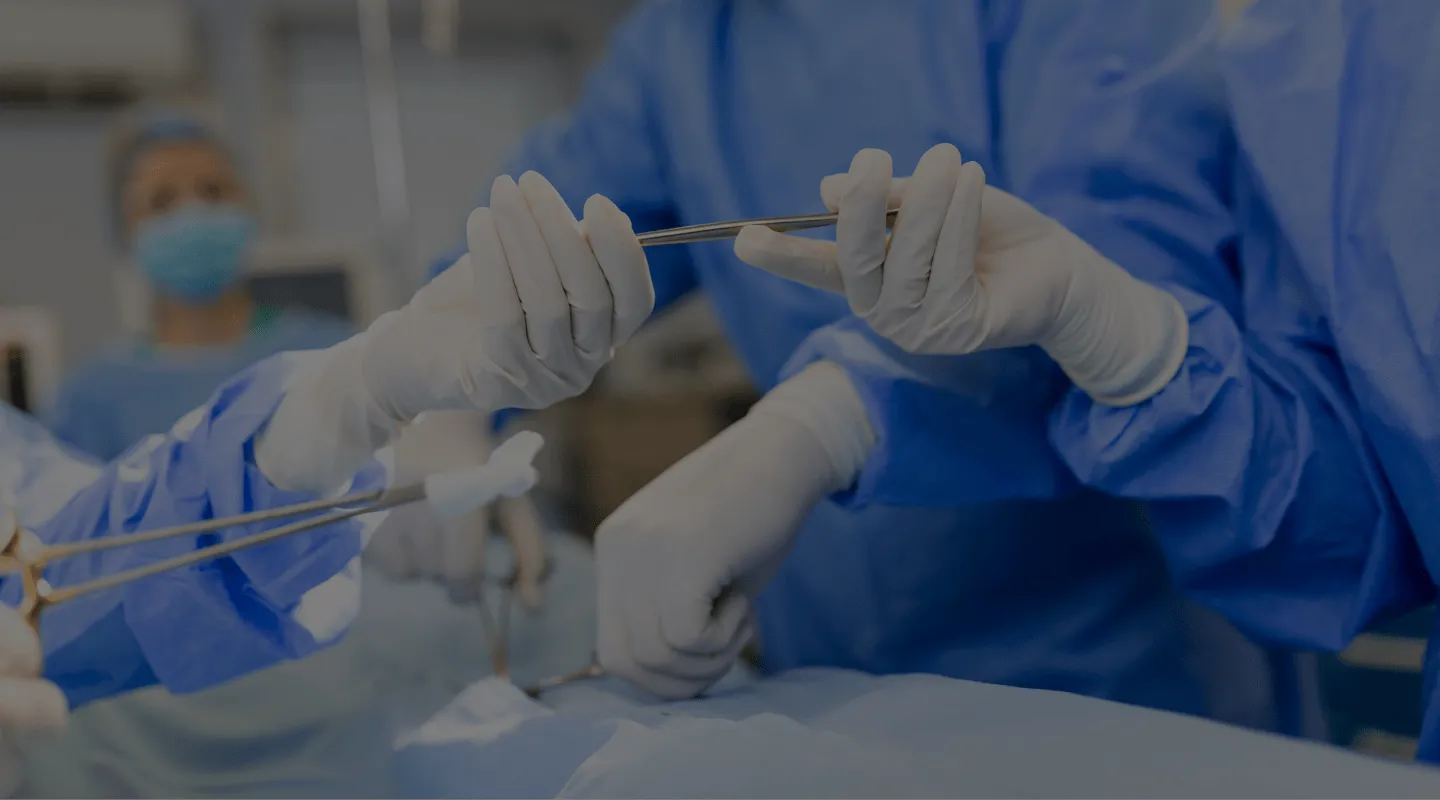
Plasma Prostate Enucleation
Your Affordable Plasma Prostate Enucleation in Tunisia
Benefit from cutting-edge techniques adapted to large volume prostates, performed by expert urologists with personalized follow-up.
How does it work?
What is Plasma Prostate Enucleation?
Plasma prostatectomy is a modern procedure that treats benign prostatic hyperplasia using plasma. This operation targets men with this condition and is performed by a qualified urologist and a competent medical team, in a medical environment equipped with advanced technologies. Discover everything about this procedure, including indications, operation, and the procedure’s progress. It is common to encounter men of all ages (although those over 50 are most affected) worldwide who suffer from benign prostatic hyperplasia, a commonly diagnosed disease. Those diagnosed exhibit a variety of urinary disorders such as a decrease in the force of the stream or repeated urges to go to the toilet. Without adequate treatment, complications can worsen and lead to urinary tract infections or even kidney failure. It is therefore essential to quickly manage this pathology. Several medical treatment options exist to curb the progression of the disease or cure it permanently. However, when these solutions do not produce satisfactory results, surgery can be considered as a last resort. By looking at the advances of modern medicine, we discover plasma prostate enucleation, a procedure that is causing a sensation in the field of urological surgery both in Tunisia and in the rest of the world. This is considered a true medical revolution. During this procedure, the prostate is no longer shaved, but it is completely enucleated. During this procedure, a laser is introduced and used to treat the pathology.
What is the average cost of plasma prostate enucleation in Tunisia?
The price for a prostate enucleation is offered by Tunisia Destination Santé from 1800 eur. To receive a personalized quote with a plasma prostate enucleation price, please contact us. Tunisia Destination Santé can offer packages including all medical care. TDS can also offer accommodation packages adapted to your budget.
What are the advantages of plasma prostate enucleation?
In addition to being considered a major medical and technological advance, plasma prostate enucleation is a procedure that has many advantages:
- The procedure produces very satisfactory results, which can last for many years;
- The technique is minimally invasive: During this operation, there is no major incision and consequently, no significant scarring to be feared afterwards.
- Less risk of complications after the operation: Compared to traditional surgery, the risks of complications such as bleeding or scarring problems are limited.
- Effectively treats even large prostates;
Plasma Prostate Enucleation in Tunisia: What you need to know before the operation
Before being able to confirm the feasibility of this procedure, you will have to undergo a series of examinations that will be prescribed by your urologist. These examinations include an ultrasound of the urinary system, blood tests, and a complete health check-up. In addition, a consultation with the anesthesiologist will be necessary before the operation. The surgeon will also give you all the instructions concerning the preparations to be made before the procedure. To ensure that everything goes well, a urine analysis will also be necessary to check for the presence of a possible infection. If this is the case, it will be important to treat it before being able to benefit from the procedure.
How is plasma prostate enucleation performed in Tunisia?
It is common for this procedure to be performed with complete sedation (although the use of regional anesthesia is also possible). The duration of the procedure varies depending on the method chosen by the surgeon and the volume of the prostate. There are two options for performing the operation:
- First possibility: the surgeon will use a laser to remove the adenoma. This method is suitable for patients whose prostate is of average size, but does not allow the adenoma to be analyzed.
- Second possibility: the surgeon will perform an enucleation of the adenoma with a fiber laser. This technique is better suited to patients with a large volume prostate, and unlike the first procedure, it allows for an analysis of the adenoma tissues;
The doctor ends the procedure by inserting a catheter. Depending on the patient’s condition and the importance of the operation, a 1 to 3 day hospitalization will generally be required. Once this period has elapsed, the catheter can be removed. Before being able to leave the clinic, some checks will be carried out; the surgeon will need to ensure that you are able to urinate without difficulty.
What are the after-effects of plasma prostate enucleation in Tunisia?
Generally there is no significant pain after this procedure. However, the surgeon may prescribe some medication to soothe any inflammation. You will have to wait at least 3 to 4 weeks before being able to return to work. It is highly recommended to wait about the same number of weeks before resuming sexual activity. As with any surgical procedure, it is important to note that complications can occur, although they are rare. Among the possible risks of this operation, there is the formation of blood clots in the bladder (which may require a return to the operating room) as well as urinary tract infections, which can be treated with appropriate medication. It is also important to mention the risk of retrograde ejaculation (when semen returns to the bladder instead of being ejaculated outwards). Before undergoing the procedure, it is essential to discuss in detail with your doctor any possible complications related to this surgical procedure.
Our advantages


Contact and request a quote for plasma prostate enucleation in Tunisia
If you are planning to have plasma prostate enucleation abroad, do not hesitate to contact us for more information and to request a free, no-obligation quote. Tunisia is an increasingly popular destination for urological procedures and prostate treatment.
Your health, our priority.
Request your free quote.
Frequently Asked Questions
Plasma prostate enucleation tends to offer faster and less painful recovery than TURP, due to the precision and minimally invasive nature of the plasma method.
Plasma prostate enucleation uses more controlled energies, reducing the risk of tissue burns and allowing better preservation of neighboring structures.
Yes, this technique is particularly effective for patients with significant prostatic hyperplasia, as it allows for the removal of large amounts of prostatic tissue in a single procedure.
Risks include bleeding, urinary tract infections, temporary incontinence, and, in rare cases, damage to neighboring structures such as the urethra or bladder.
Patients are generally followed up with regular consultations to monitor urinary function and ensure the absence of complications. Check-up examinations are also carried out to assess healing.
Most patients retain their erectile function after the procedure, although there may be an adjustment period. However, some may experience changes in ejaculation.
The duration of the procedure may vary depending on the size of the prostate, but it generally lasts between 1 and 2 hours.
Patients with moderate to severe symptoms of benign prostatic hyperplasia, particularly those who have not responded to drug treatments, are potential candidates for this procedure.
In general, patients can expect a 1 to 2 day hospitalization. Some clinics even offer outpatient procedures with appropriate post-operative monitoring.
Costs can vary considerably depending on the region and medical facility, but plasma prostate enucleation is often comparable, or sometimes more economical in the long term due to reduced complications and hospitalizations.
